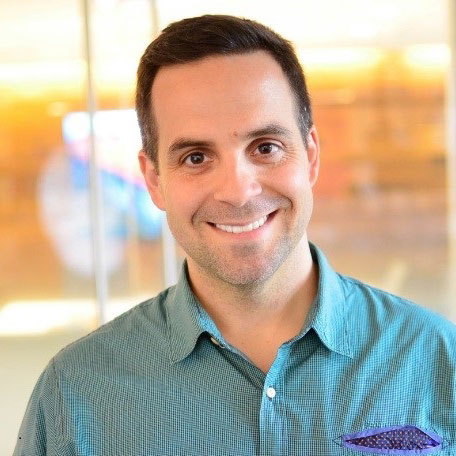Grace, Sense-Making and Community in the Fight Against Systemic Oppression
A conversation with Nicole Javanna Johnson of Harriet Tubman Effect
I had the great pleasure of meeting Nicole Johnson, founder and creative director of Harriet Tubman Effect, at a recent TEDx event I helped organize. Her work in dismantling systemic oppression continues to garner support across a range of industries. What I’ve learned from hearing her speak about her work is that success in her efforts requires the people and communities she is working with to fully engage. Engagement is a buzzword used in many circles but it seems this is one of the core currencies in the work of breaking down legacy systems and making true progress. Nicole is a pioneer in this space and brought some really thoughtful insights to the conversation.
Damian Bazadona: A significant amount of your very important work is to dismantle systemic oppression and usher in a new era of empathy. What has been the most important force in building a community of support for your work?
Nicole Javanna Johnson: I work with leaders, artists, community members and researchers across several industries as they dismantle systemic oppression, and our commitment to grace has been the most important force in building our community. Grace is generally understood as a sentiment or a tone in this work of diversity, equity and inclusion, but we define grace as a refusal to give up on telling the truth about our workplace circumstances, our behaviors, the behaviors of others and our communal decisions. We are telling one another the truth about the systems we are a part of and holding one another accountable for the change we want to contribute to.
Throughout our journey dismantling systemic oppression, we explore everything from personal identity, impact and influence to understanding the motivations, history and skill sets of the people we are collaborating with. It’s certainly a huge influx of information, and the process tends to uproot personal insecurities and activates our hesitancy. Grace also comes in as we help one another commit to our journey despite the hiccups, twists and turns.
Success in changing people’s behavior is often a marathon and not a sprint. How do you keep your community of supporters engaged and sustained? What’s the hardest part of maintaining a community of support?
Our human nature is rooted in sense-making: understanding the small stories and grand stories that make up our everyday circumstances. Telling the story of this marathon towards sustainable social change and dismantling systemic oppression is my largest task in sense-making for members of the community. I’m consistently retelling the story of why we are participating in this work together, offering new details, painting the larger picture and reminding people of their role in it.
You would think our brains remember why we are committed to this work, but the stressors of defeat, ongoing social aggressions, and pushback from opposers certainly discourages the brain and the body from participating. I like to think of myself as the ultimate wellness retreat host for dismantling systemic oppression. I create environments that activate your senses and ensure that your body, heart and mind are ready to participate in the work no matter what.
Although this is the hardest part of my work, I am so curious about our ability to commit to new behaviors and often find myself studying “second nature”—a characteristic or habit in someone that appears to be instinctive because that person has behaved in a particular way so often. My goal is to create learning and loving environments where this work becomes second nature for all of us.
For example: Jumping on the train to get to 34th Street from Crown Heights, Brooklyn, is a part of my personal second nature as a New Yorker, and the behavior itself is reinforced every day by the sense-making we navigate as commuters in a commuter city. I figure in my work as a researcher and creative director at HTE I can create pathways of sense-making for diversity, equity and inclusion, illuminating components of our workplaces that people don’t normally see. Helping them to imagine themselves making change in these spaces and activating their ability to recruit others in their work.
Beyond the illumination of the possibilities, it’s also about grounding people in understanding their identity and pushing them to imagine how they can engage in personal transformation work. The task of helping people with this sense-making of their dismantling systemic oppression journey is a guided walk through many steps accompanied by a growing community and the excitement of the social change movement. My job is to continue to build and cultivate this ecosystem, adding new members, teachers, artists, activities, resources and stages that help everyone along their dismantling systemic oppression journey.
What’s the single biggest misconception you come across in your work that you could share with our readers who want to be supportive of your efforts in dismantling system oppression?
Harriet Tubman Effect’s (HTE’s) focus on dismantling systemic oppression through participatory-action research lends itself to a unique track of learning and social impact. Participatory-action research is a movement-driven style of research emphasizing community engagement and ongoing commitment from people affected by the research questions at hand.
Upon encountering HTE, most people don’t recognize that dismantling systemic oppression requires a commitment to ongoing shifting of our current systems in ways that are contrary to behaviors of traditional capitalism. So as we participate in this system, we WILL be changing it. The speed at which we change the systems we’ve been invited into tends to be a bit shocking for anyone we work with. Everyone from new employees to clients are navigating this culture shock as we hold steadfast to our values of resisting white supremacy culture, efficacy, reallocation of wealth, research as learning and maintaining a culture of empathy.
What’s great about values-based leadership is that our values literally steer the work and uncover things about our current practices that need immediate dismantling. The culture we know today as our typical American business culture inevitably has roots in the mindset of white supremacy. The cotton plantations of the South and the franchises of the 1950s were built in the midst of slavery and Jim Crow segregation. As we recognize those things alongside our members and clients, the transition from defensiveness and confusion to active dismantling of systemic oppression in modern time is a bit jarring. We liken it to stepping into a whole new world and deciphering what the rules of the environment are, how does one function, how do we thrive?
All that being said, we are grateful to help people with this transition and offer educational resources, community, conversations and ways to practice new behaviors.
How would you describe the most fulfilling part of your work? What does a good day feel like?
There are these little pockets of excitement that happen for me when I see clients or team members shift into a new stage of their dismantling systemic oppression journey. We articulate five major growth steps in a Harriet Tubman Effect journey, and sometimes the shift from one step to the next is characterized by inner “aha moments” and other times it’s huge collaborative moments of community organizing or storytelling. I’ve seen things happen spontaneously in rooms where someone who has navigated the learning for a while suddenly arrives on the scene of “the new world.” Boldly they start to show up in a way that only they can to advocate for justice, guide someone on their journey or hold an institution accountable. I absolutely adore these moments, and if I can get one of those a day, it’s been a good one.
You are in a role that must absorb a significant amount of emotional energy. How do you compartmentalize that to enable you to run the marathon?
I’m honestly still figuring out my answer to this, but I’m sure I will arrive at a better understanding as I continue to do the work. One thing I know I have incorporated into my life more often is sacrifice. There are ways of serving that I used to really love, including direct response and emergency response work around supporting people in their workplace. I’ve realized that I really need to step back and use my energy for the larger strategizing and training of others. Better understanding my strengths and contextualizing how I can best contribute to this movement is the best thing I can do to navigate the challenge of emotional exhaustion. If I define and function in a capacity that is appropriate for me, I will be able to engage in the marathon. If I start to venture outside of my capacity, I’m bound to crash.
What gives you hope for meaningful change?
I try my best to recognize that this work will continue beyond my lifetime. Just like past civil rights leaders, my work will change the life of someone in the future. I am so deeply aware that I am a beneficiary of civil rights work in the 1800s, the 1900s and the early 2000s. I am excited to say that I’m confident in my impact on the future and I hope that communities who are interested in dismantling systemic oppression in 10-50 years have an easier time at it because of my work. Perhaps they may even find it comforting, fun and enjoyable.
Building Passionate Communities is a regular interview series where Damian Bazadona, president and founder of Situation Group, sits down with extraordinary leaders at organizations that have paved the way in both cultivating passionate communities and driving them to meaningful action. For more about Building Passionate Communities, or to be considered for the series, please get in touch.










